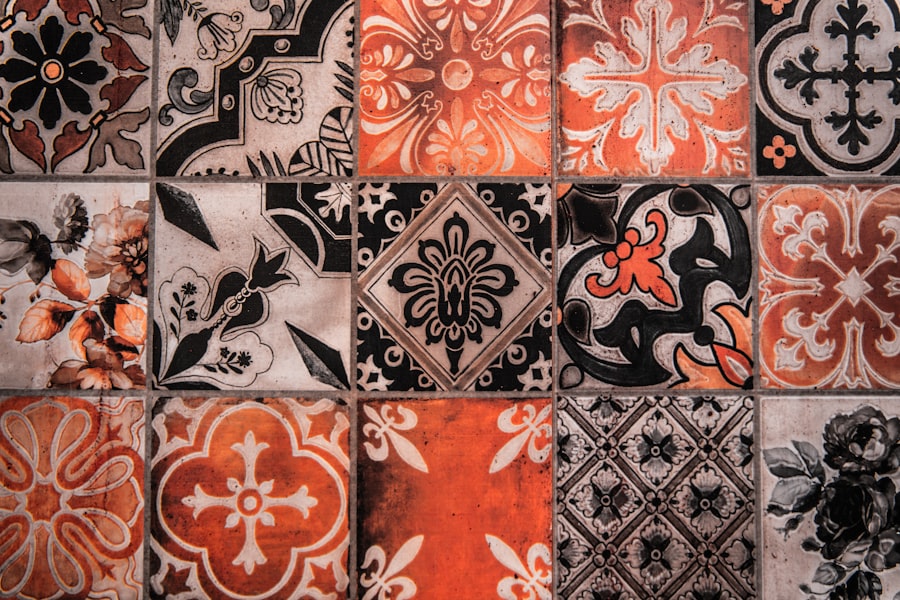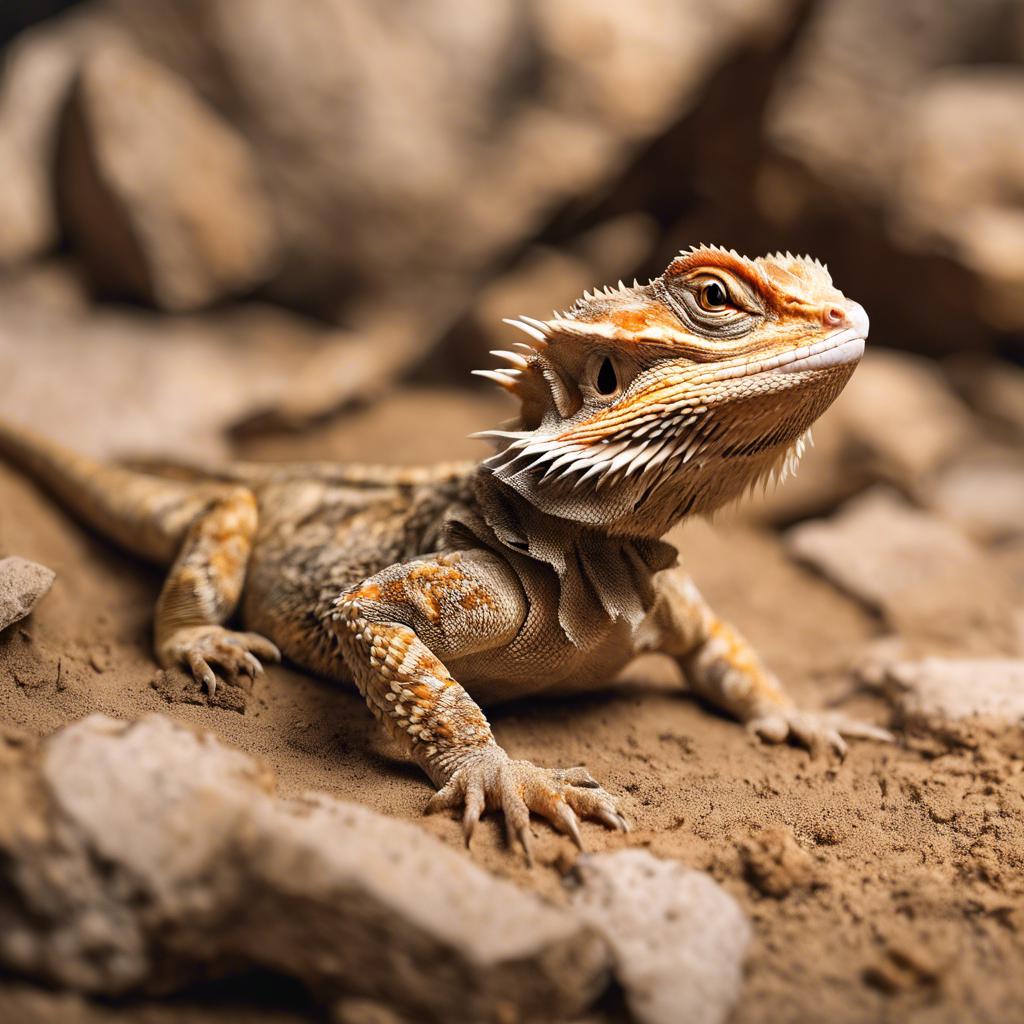When it comes to caring for your bearded dragon, choosing the right substrate is crucial for their health and well-being. One popular option that has gained popularity among reptile enthusiasts is tile substrate. Tile substrate offers a range of benefits, from its durability to its ease of cleaning. In this article, we will explore the advantages of using tile substrate for bearded dragons and provide tips on how to choose the right tile for your pet's enclosure.
Key Takeaways
- Tile substrate is a safe and effective option for bearded dragon care.
- Using tile substrate can prevent impaction and other digestive issues in bearded dragons.
- When choosing tile substrate, consider the size, texture, and color of the tiles.
- Proper preparation and maintenance of the enclosure is important for using tile substrate.
- Regular monitoring of your bearded dragon's health and behavior can help prevent common health issues related to substrate.
Benefits of Using Tile Substrate
One of the main benefits of using tile substrate for bearded dragons is its durability. Unlike other substrates that can break down over time, tiles are long-lasting and can withstand the wear and tear of your pet's daily activities. This means that you won't have to constantly replace the substrate, saving you time and money in the long run.
Another advantage of tile substrate is its ease of cleaning. Bearded dragons are known to produce a significant amount of waste, and having a substrate that is easy to clean is essential for maintaining a clean and hygienic enclosure. With tile substrate, all you need to do is wipe or mop the surface to remove any waste or debris. This makes it a convenient option for busy reptile owners.
Furthermore, tile substrate can help prevent impaction, which is a common health issue in bearded dragons. Impaction occurs when a bearded dragon ingests loose substrate, such as sand or wood chips, which can cause blockages in their digestive system. Tile substrate eliminates this risk as it provides a solid surface that cannot be ingested by your pet.
How to Choose the Right Tile for Your Bearded Dragon
When choosing tile substrate for your bearded dragon's enclosure, there are a few factors to consider. First, you'll want to choose a tile that is non-porous and easy to clean. Porous tiles can absorb waste and bacteria, making it difficult to maintain a clean environment for your pet. Ceramic or porcelain tiles are good options as they are non-porous and can be easily wiped clean.
Additionally, you'll want to choose a tile that is not too slippery for your bearded dragon. Smooth tiles may cause your pet to slip and injure themselves. Look for tiles with a textured surface that will provide traction for your bearded dragon as they move around their enclosure.
Lastly, consider the size of the tile. Larger tiles are easier to clean and provide a more stable surface for your pet. Smaller tiles may have more grout lines, which can be difficult to clean and may harbor bacteria.
Preparing the Enclosure for Tile Substrate
Before installing tile substrate in your bearded dragon's enclosure, it's important to properly prepare the space. Start by thoroughly cleaning and disinfecting the enclosure to remove any bacteria or parasites that may be present. Use a reptile-safe disinfectant and allow the enclosure to dry completely before proceeding.
Next, measure the dimensions of the enclosure and purchase enough tiles to cover the entire floor. It's important to have a seamless surface to prevent any gaps where waste or bacteria can accumulate. Lay out the tiles in the enclosure to ensure they fit properly before permanently installing them.
To install the tiles, use an adhesive suitable for reptile enclosures. Apply the adhesive to the back of each tile and press firmly onto the floor of the enclosure. Allow the adhesive to dry completely before introducing your bearded dragon back into their enclosure.
Cleaning and Maintenance of Tile Substrate
One of the advantages of using tile substrate is its ease of cleaning and maintenance. To keep your bearded dragon's enclosure clean and hygienic, it's important to establish a regular cleaning routine.
Start by spot cleaning any waste or debris on a daily basis. Use a reptile-safe disinfectant and a cloth or mop to wipe down the tiles. Pay special attention to any areas where waste may accumulate, such as corners or under decorations.
Once a week, perform a deep clean of the enclosure. Remove all decorations and thoroughly clean them with a reptile-safe disinfectant. Remove the tiles and clean them separately, ensuring that all waste and bacteria are removed. Allow the tiles to dry completely before reinstalling them in the enclosure.
Bearded Dragon Care Tips for Tile Substrate

When using tile substrate for your bearded dragon, there are a few additional care tips to keep in mind. First, provide a basking spot for your pet. Bearded dragons require a temperature gradient in their enclosure, with a basking spot that reaches around 100-110 degrees Fahrenheit. Place a heat lamp or ceramic heat emitter above the tile substrate to create a warm basking area for your pet.
Additionally, proper lighting is essential for your bearded dragon's health. UVB lighting is necessary for their calcium metabolism and overall well-being. Ensure that the UVB light reaches your pet by positioning it above the tile substrate.
Lastly, consider adding some enrichment to your bearded dragon's enclosure. This can include branches, rocks, or other decorations that provide climbing opportunities and hiding spots. Just make sure that these items are securely placed on the tile substrate to prevent any accidents.
Common Health Issues Related to Substrate
Using the wrong substrate can lead to various health issues in bearded dragons. One of the most common issues is impaction, which occurs when loose substrate is ingested and causes blockages in the digestive system. Impaction can be life-threatening if not addressed promptly.
Another health issue related to substrate is respiratory problems. Certain substrates, such as sand or wood chips, can create dust particles that can irritate your bearded dragon's respiratory system when inhaled. This can lead to respiratory infections and other respiratory issues.
Preventing Impaction in Bearded Dragons
To prevent impaction in bearded dragons, it's important to provide proper hydration. Ensure that your pet has access to fresh water at all times and regularly mist their enclosure to maintain humidity levels. Proper hydration can help prevent constipation and make it easier for your bearded dragon to pass waste.
Avoid using loose substrate, such as sand or wood chips, as these can be easily ingested by your pet. Instead, opt for tile substrate or other solid options that cannot be swallowed.
Signs of Digestive Issues and How to Address Them
Signs of digestive issues in bearded dragons include loss of appetite, bloating, constipation, or diarrhea. If you notice any of these symptoms, it's important to address them promptly.
First, ensure that your bearded dragon is properly hydrated by offering fresh water and misting their enclosure. If the issue persists, consult a reptile veterinarian who can provide further guidance and treatment options.
Using tile substrate can help prevent digestive issues as it eliminates the risk of impaction and provides a solid surface for your pet to move on.
Tile Substrate as a Safe and Effective Option for Bearded Dragon Care
In conclusion, tile substrate is a safe and effective option for bearded dragon care. Its durability and ease of cleaning make it a convenient choice for reptile owners. By choosing the right tile and properly preparing the enclosure, you can provide a clean and hygienic environment for your pet.
Tile substrate also helps prevent common health issues such as impaction and respiratory problems. By eliminating the risk of loose substrate ingestion, you can ensure the overall health and well-being of your bearded dragon.
Consider using tile substrate for your own bearded dragon's enclosure and enjoy the benefits it offers in terms of cleanliness, durability, and safety. Your pet will thank you for it!
If you're a proud owner of a bearded dragon, you know how important it is to provide them with a comfortable and safe habitat. One crucial aspect of their enclosure is the choice of tile substrate. To learn more about the best options for tile substrate for bearded dragons, check out this informative article on Reptile Wizard. It discusses the importance of choosing the right type of tile and provides helpful tips on maintaining a clean and hygienic environment for your beloved reptile. Don't miss out on this valuable resource! Click here to read the article now.
FAQs
What is a tile substrate for bearded dragons?
A tile substrate for bearded dragons is a flooring option made of ceramic or porcelain tiles that is used in their enclosure.
Why is a tile substrate recommended for bearded dragons?
A tile substrate is recommended for bearded dragons because it is easy to clean, does not retain moisture, and does not pose a risk of impaction if ingested.
How do I install a tile substrate in my bearded dragon's enclosure?
To install a tile substrate in your bearded dragon's enclosure, measure the dimensions of the enclosure and purchase enough tiles to cover the floor. Clean the enclosure thoroughly and lay the tiles in place, ensuring that they are level and secure.
What size tiles should I use for my bearded dragon's enclosure?
The size of tiles you should use for your bearded dragon's enclosure depends on the size of the enclosure. Larger tiles are easier to clean, but smaller tiles may be necessary for smaller enclosures.
Can I use any type of tile for my bearded dragon's enclosure?
It is recommended to use ceramic or porcelain tiles for your bearded dragon's enclosure, as they are non-porous and easy to clean. Avoid using natural stone tiles, as they may contain minerals that can be harmful to your bearded dragon.
How often should I clean my bearded dragon's tile substrate?
You should clean your bearded dragon's tile substrate as often as necessary to maintain a clean and hygienic environment. This may vary depending on the size of the enclosure and the number of bearded dragons living in it.

